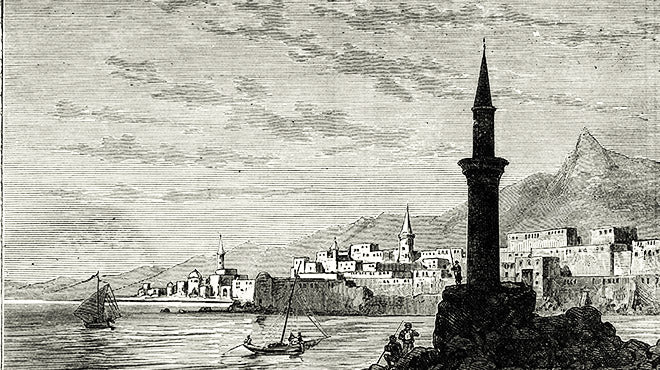
The Future of Boswellia Sacra: Conservation Efforts and Sustainable Harvesting
Awaken To The OneShare
The Future of Boswellia Sacra: Conservation Efforts and Sustainable Harvesting
Frankincense, specifically Boswellia sacra, has been treasured for thousands of years for its rich aroma, spiritual significance, and therapeutic properties. Once primarily associated with the incense trade, Boswellia sacra has become a sought-after ingredient in aromatherapy, skincare, and wellness products. However, as demand for this precious resin grows, concerns about the sustainability of harvesting practices and the preservation of Boswellia sacra trees have become more pressing. In this blog, we’ll explore the importance of sustainable harvesting, current conservation efforts, and what the future holds for the iconic frankincense tree.
The Ecological and Economic Importance of Boswellia Sacra
Boswellia sacra, also known as Omani frankincense, is a tree that thrives in the dry, rocky environments of the Arabian Peninsula, particularly in Oman, Yemen, and parts of Somalia. The resin it produces is not only essential for local economies but also holds cultural and spiritual significance. In Oman, frankincense has been used for centuries in religious rituals, healing practices, and daily life. Its trade once helped propel Oman to the status of a key player on the ancient Incense Route, a network of trade routes connecting the Arabian Peninsula to regions across Africa, Europe, and Asia.
Today, Boswellia sacra is still a valuable export, supporting livelihoods for many rural communities. The resin is used in incense, essential oils, perfumes, and cosmetics, with its demand only increasing in recent years as more consumers turn to natural, sustainable products.
However, the commercial harvesting of Boswellia sacra comes with challenges. As with many natural resources, over-harvesting, climate change, and deforestation threaten the long-term health and survival of the Boswellia tree. Without proper management and conservation efforts, the delicate balance between economic benefit and ecological sustainability could be disrupted.
The Challenges of Over-Harvesting and Unsustainable Practices
The process of harvesting frankincense requires careful, skillful tapping of the tree’s bark to release its resin. While this practice has been carried out for centuries, the growing demand for Boswellia sacra has led to over-exploitation in some areas. If trees are tapped too aggressively, without allowing sufficient time for recovery, it can lead to long-term damage, decreased resin production, or even the death of the tree.
In some instances, trees may be over-tapped, and improper harvesting methods can cause irreversible harm. The increase in demand, particularly in the luxury and wellness markets, is putting a strain on the natural populations of Boswellia sacra. Additionally, unsustainable land management and deforestation threaten the ecosystems where these trees grow, making it increasingly difficult for Boswellia sacra to thrive.
The consequences of over-harvesting extend beyond the trees themselves. The delicate desert ecosystem, which includes other plants and wildlife, is also at risk when Boswellia sacra is harvested unsustainably. This can lead to loss of biodiversity and ecological imbalance, further threatening the future of this important resource.
Sustainable Harvesting: A Path to Protecting Boswellia Sacra
Recognizing these challenges, Oman and other regions are increasingly focused on promoting sustainable harvesting practices for Boswellia sacra. The key to protecting this invaluable resource is striking a balance between economic prosperity and environmental conservation. Here are some of the sustainable practices being implemented:
1. Regulated Harvesting Guidelines
In recent years, governments and environmental organizations have implemented guidelines that regulate how and when Boswellia sacra can be tapped. These regulations ensure that trees are not harmed by over-tapping and that the harvesting process is done with respect for the health of the trees. Harvesters are encouraged to tap the trees only once or twice a year, allowing time for the tree to recover between harvests.
The collection of resin is also being monitored to ensure that only high-quality resin is gathered, which helps avoid waste and ensures that the market remains sustainable. By establishing clear harvesting guidelines, the risk of damage to the trees is minimized, and it’s ensured that the harvests remain viable for future generations.
2. Reforestation and Cultivation Projects
Efforts to conserve Boswellia sacra aren’t just about regulating harvesting; they also involve active reforestation and cultivation projects. In Oman, initiatives have been launched to replant Boswellia trees in areas where natural populations have been depleted. Additionally, sustainable tree farming practices are being explored to reduce pressure on wild trees while still meeting the demand for frankincense.
By growing Boswellia sacra in controlled environments or managed forests, farmers can increase the production of frankincense without damaging the natural habitat. These initiatives not only help ensure a steady supply of the resin but also provide additional income for local communities, allowing them to participate in conservation efforts while benefiting economically.
3. Community Involvement and Education
Conservation efforts must involve the local communities who rely on frankincense harvesting for their livelihoods. By educating harvesters on the importance of sustainable practices and how they can help protect the trees, communities become key stakeholders in the conservation process.
Farmers are taught how to properly tap the trees, how to assess the health of the trees before harvesting, and the importance of allowing trees time to heal between harvests. In this way, the communities not only benefit from sustainable income but also help safeguard the trees for future generations.
Additionally, fair trade practices are being promoted to ensure that harvesters are compensated fairly and that the economic benefits of sustainable frankincense production are equitably distributed.
The Role of Technology in Conservation
Technology is playing an increasingly important role in the conservation of Boswellia sacra. Researchers are using satellite imagery and drones to monitor the health of Boswellia forests, track deforestation, and assess the impact of harvesting. This data allows for better planning of conservation strategies and helps ensure that the harvesting practices remain sustainable.
In addition, researchers are studying the genetic diversity of Boswellia sacra populations to better understand how climate change and environmental stressors are affecting the trees. This knowledge will be crucial for developing more effective conservation strategies and ensuring the long-term survival of the species.
What the Future Holds for Boswellia Sacra
The future of Boswellia sacra depends on continued efforts to balance the demand for frankincense with the need to protect the natural environment. Sustainable harvesting practices, reforestation, community involvement, and technological advancements are all helping to secure the future of this sacred tree. As global interest in natural wellness products grows, it is more important than ever that we commit to the conservation of Boswellia sacra to ensure that it remains a viable resource for generations to come.
Consumers also have a role to play in this conservation effort by supporting companies that prioritize sustainability and ethical sourcing of frankincense. By choosing products that are certified as fair trade or sustainably harvested, we can contribute to the preservation of this ancient and precious tree.
As long as the right steps are taken, Boswellia sacra can continue to be a symbol of both cultural heritage and environmental stewardship—a gift from nature that will be cherished for many years to come.
